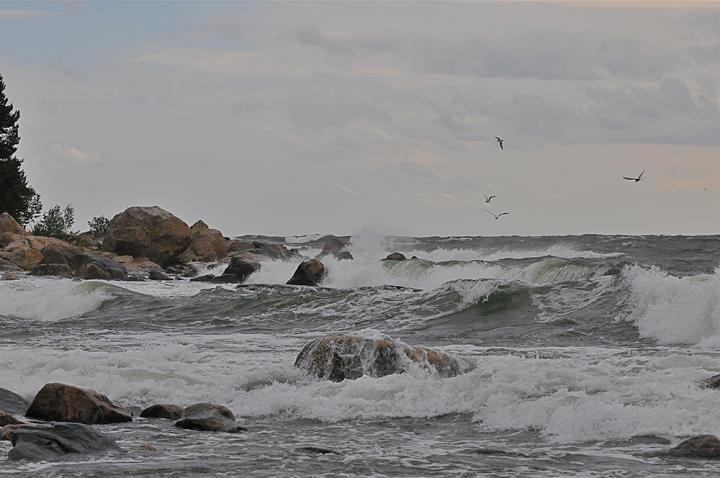Ocean toxicity hampered the rapid evolution of complex life

Ocean with rocks. Credit: Mostphotos
“In the article we argue that when we first see the appearance of complex life on Earth, is when life have developed mechanisms to resist catastrophic chemical changes forced by global glaciations. And that this enabled the expansion of complex life in oceans, and paved the way for our own evolution”, says Dr Ernest Chi Fru of Stockholm University, who has led the research group.
The first appearance of oxygen in the atmosphere occurred at a time when marine arsenic concentrations were dramatically low, at about after 2.45 billion years ago.
This is also a period when Earth experienced its first known global glaciation. At the end of these glaciations, considerable rise in marine arsenic concentrations concurred with rapid demise of atmospheric oxygen.
The authors infer — from the way modern photosynthetic organisms react to changing marine arsenic concentrations — that this event was due to widespread ocean toxicity resulting from the release of toxic elements into the oceans when the ice melted.
A similar low and high arsenic content accompanied the coming and going of global glaciations at around 0.7 billion years ago, which is when Earth first saw the appearance of complex life.
While the low marine arsenic concentrations again coincide with a rapid rise in atmospheric oxygen content to near modern day levels at this time, the subsequent increase when the ice melted is not accompanied by atmospheric oxygen decline.
###
The study was performed by an international team of researchers from Sweden, Greece and France, led by Dr Ernest Chi Fru of Stockholm University. It was funded by the European Research Council.
The article Arsenic Stress after the Proterozoic Glaciations was recently published in Nature Group Journal, Scientific Reports.
For further information
Dr Ernest Chi Fru
46-0-73-33-33-647
ernest.chifru@geo.su.se
Department of Geological Sciences
Stockholm University
Media Contact
All latest news from the category: Earth Sciences
Earth Sciences (also referred to as Geosciences), which deals with basic issues surrounding our planet, plays a vital role in the area of energy and raw materials supply.
Earth Sciences comprises subjects such as geology, geography, geological informatics, paleontology, mineralogy, petrography, crystallography, geophysics, geodesy, glaciology, cartography, photogrammetry, meteorology and seismology, early-warning systems, earthquake research and polar research.
Newest articles

Properties of new materials for microchips
… can now be measured well. Reseachers of Delft University of Technology demonstrated measuring performance properties of ultrathin silicon membranes. Making ever smaller and more powerful chips requires new ultrathin…

Floating solar’s potential
… to support sustainable development by addressing climate, water, and energy goals holistically. A new study published this week in Nature Energy raises the potential for floating solar photovoltaics (FPV)…

Skyrmions move at record speeds
… a step towards the computing of the future. An international research team led by scientists from the CNRS1 has discovered that the magnetic nanobubbles2 known as skyrmions can be…




















